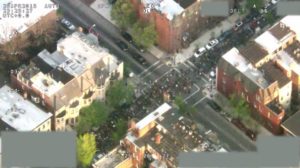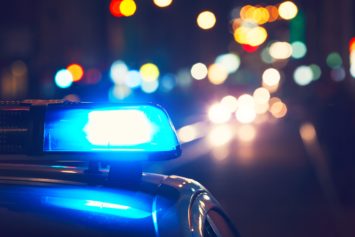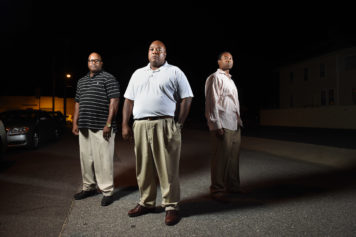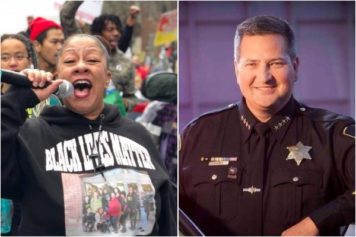
FBI footage from the spy plane operation (29 April 2015) Image courtesy of International Business Times/FBI Vault
Last week, the FBI released hours-long surveillance footage of the Baltimore protests that erupted following the death of Freddie Gray in 2015. The nearly 18 hours of video were secretly captured by government spy planes sent to monitor the Black Lives Matter protests between April 29 and May 3.
According to Fusion, the footage was released in response to an FOIA request from the American Civil Liberties Union. Utilizing a thermal-imaging system with infrared cameras attached to the plane’s wing, the videos were captured over a five-day span during at least 10 surveillance flights, the news site reports.
The FBI has since justified its actions, calling the aerial monitoring “necessary.” The agency also released a memo, in response to the same FOIA request, asserting that surveillance of the Black Lives Matter protests was “consensual.” None of the demonstrators consented, however.
It’s also unlikely protesters knew they were being watched, as much of the surveillance was conducted at night.
The International Business Times reports that the lengthy recordings have been split into 30-minute clips showing large groups of demonstrators marching through the streets. At least one of the clips indicates that drones were also sent to monitor the “large scale protests.” According to the publication, both drone and surveillance flights were orchestrated in conjunction with the Baltimore Police Department.
“There are undoubtedly situations where aerial surveillance by law enforcement is appropriate, but there should be protections against mass surveillance of people engaged in first amendment-protected protests and gatherings,” said the ACLU’s Nathan Wessler and Naomi Dwork following the release of the footage. “At a time when the Movement for Black Lives is urgently mobilizing across the country, community members and activists shouldn’t have to worry that the government eyes in the sky will be capturing images of everything they do during a protest.”
Baltimore isn’t the only city the FBI has had its eye on, however. Last October, FBI director James Comey disclosed that the agency had also flown surveillance planes over Ferguson, Missouri during protests over the death of Michael Brown. The unarmed Black teen was shot dead by a white Missouri cop and left lying in the middle of the street.
“If there is tremendous turbulence in a community, it’s useful to everybody — civilians and law enforcement — to have a view of what’s going on,” Comey said of the surveillance during a congressional meeting last fall. “Where are the fires in this community? Where are people gathering? Where do people need help? And sometimes the best view of that is above rather than trying to look from a car in the street.”
While the aerial monitoring was deemed “consensual,” the FBI director noted that it is unnecessary for the agency to get permission for that kind of surveillance.
“The law is pretty clear that you don’t need a warrant,” he said.
That is thanks in part to a 1989 Supreme Court decision which found that private citizens shouldn’t expect privacy from watching eyes in the sky. According to Reason Magazine science correspondent Ronald Bailey, U.S. justices on the case of Florida v. Riley “ruled that since airplanes and helicopters often fly over private property, citizens do not have a reasonable expectation of privacy that their activities will not be observed from the air.”
According to a Buzzfeed analysis of data collected by aircraft-tracking site FlightRadar24, the FBI has conducted such intrusive surveillance over 3,000 times in the last six months of 2015. The Department of Homeland Security employed a similar number of surveillance flights — 3,059 to be exact.
Though the video resolution isn’t clear enough to capture individual faces, the plane’s cameras can zoom in incredibly tight. This has the ACLU worried that the government is working to monitor individual protesters, then have them arrested later. Such policing could result in a chilling effect on citizens’ freedom to exercise their First Amendment right to assembly.
“We’re certainly not saying the FBI should never be allowed to use a camera attached to an aircraft,” Wessler said. “But when we start seeing hours-long surveillance of people protesting in the streets, that gets worrisome. We really need to think about what uses of this technology is appropriate and what kinds of limitations should be put in place.”
In response to the ACLU’s concerns, a spokesperson for the FBI reiterated that the footage was not taken to surveil individual protesters, but to monitor an area with the “potential for large scale violence and riots.”
“As the videos clearly demonstrate, the aviation surveillance was intended to identify areas of potential violence or criminal activity in support of the Baltimore Police Department,” they said. “There is no identification or tracking of lawful protesters.”
To access the FBI footage, click here.


